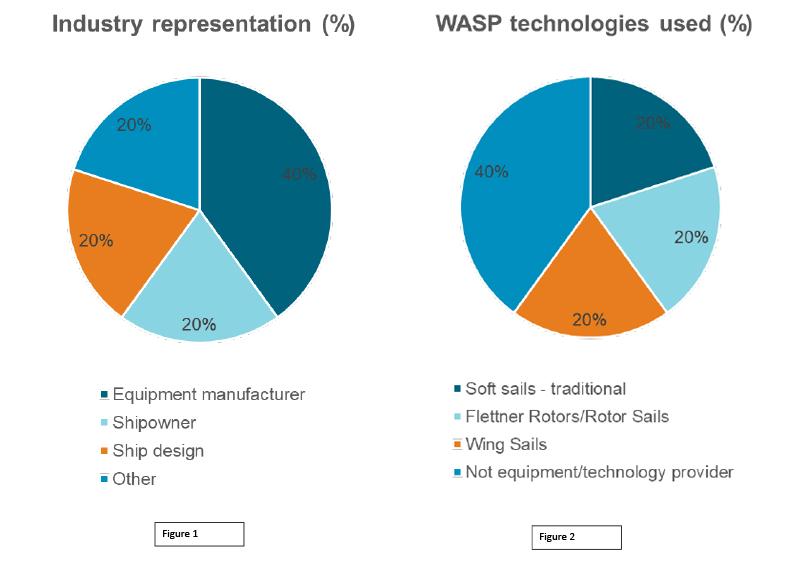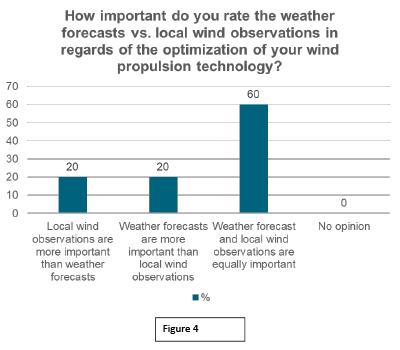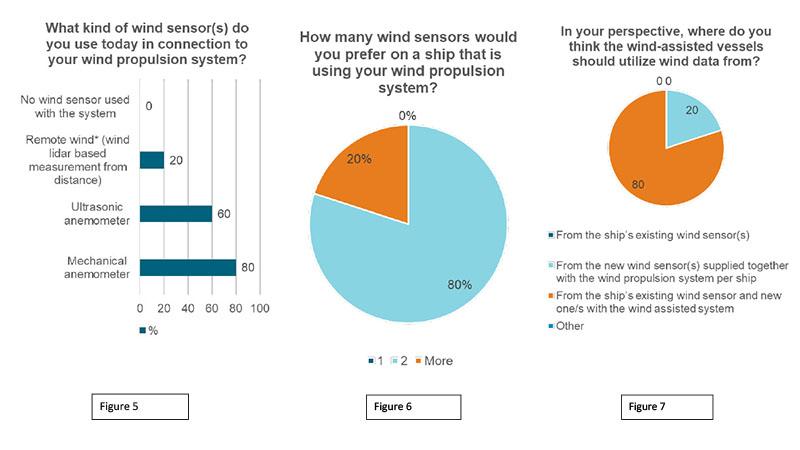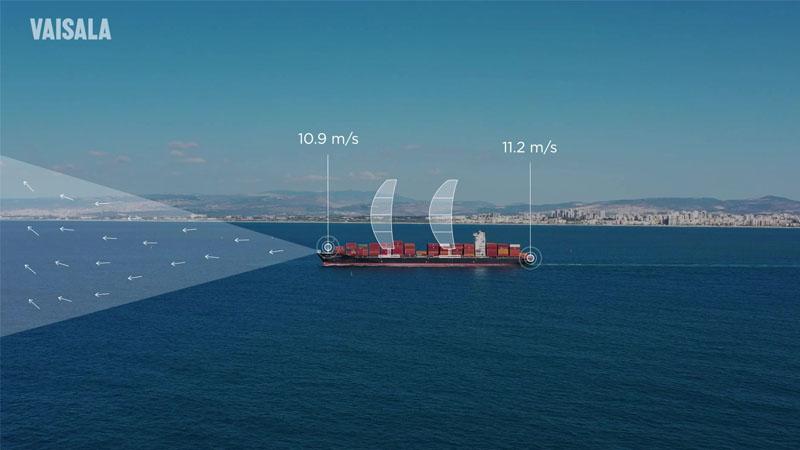Challenges and future needs of wind measurement technologies for wind-assisted vessels
Climate change and air quality are driving big changes in the shipping industry. Shipping operators are looking for ways to use less fossil fuel, which is a major challenge as inexpensive, carbon-free energy sources are hard to find and take time to build. Except for the one that has always existed: wind.
Wind-assisted ship propulsion (WASP) is one the key technologies in decarbonizing the future of maritime shipping. Accurate, reliable wind and weather sensing technologies play an important role in helping to ensure wind-assisted propulsion is harnessed to its fullest potential.
Wind survey to reveal needs of the industry
In early 2022, Vaisala and the International Windship Association (IWSA) conducted an anonymous survey with companies active in the marine wind propulsion sector. The goal was to better understand current challenges and future needs in wind observation and optimization technologies on wind-assisted/propulsion-based vessels.
More than a third of survey respondents (40%) represented wind-assisted ship propulsion equipment manufacturers (figure 1), with equal proportion in the representation of different WASP technologies (20% Flettner Rotors/Rotor Sails, 20% Wing sails and 20% Soft sails – traditional) (figure 2).

Wind and weather measurement needs
Over 80% of the survey respondents responded that the local wind measurement is "Important" and 20% as "Very important" for the optimal performance of their wind propulsion technology. Wind measurements, including sensors and wind lidar, help with route and system optimization, safety, emergency shutdown, optimization and automatic system start and stop (figure 3).

The majority of survey respondents (60%) use weather forecasts in the optimization of their wind propulsion technology, and 60% of respondents think that weather forecasts and local wind observations are equally important for the optimization of their wind propulsion technology (figure 4).

Wind measurement and optimization
Some of the key challenges in wind measurement and optimization related to wind propulsion system optimization were mentioned as:
- Masking effect (blockage from ship structures or cargo) makes it necessary to install several sensors
- Turbulence, wind direction shifts, and varying wind speed caused by ship structures can lead to inaccurate sensor data and reduced system efficiency
- Ship structures and waves can impact measurement stability
- Optimal weather routing solutions are scarce
All of the survey respondents also regard measurement of other weather and environmental parameters in addition to wind speed and direction important for system optimization, with the following parameters mentioned:
- Temperature
- Humidity
- Precipitation/rain
- Waves
- Current
Key challenges with existing wind sensors
The goal of wind-assisted propulsion is to maximize thrust from the wind. The ability to nowcast upcoming wind conditions can make a huge difference in optimizing propulsion power. Many existing wind sensors currently used in commercial shipping vessels simply do not provide enough information to maximize wind-assisted ship propulsion technology.
The majority of survey respondents (80%) are using mechanical wind anemometers to measure local wind conditions (figure 5), and most (80%) survey respondents would also prefer to use 2 or more wind sensors on a ship that is using their wind propulsion system (figure 6). Also, 80% of respondents would prefer to use a ship’s existing wind sensors and new one(s) with the wind assisted system (figure 7).

In general, survey respondents think that key challenges with the existing wind sensors in vessels:
- Do not provide high-quality, reliable wind data
- Are placed in sub-optimal locations
- Cannot compensate for masking effects
- Require calibration and other maintenance
- Wear out too quickly from demanding offshore conditions
Wind remote monitoring
Where wind sensors provide information on area-specific wind conditions, wind lidars provide a comprehensive wind profile for conditions over a wide area that can help WASP manufacturers to refine system development, evaluate effectiveness and optimize their systems. Wind lidar measurements can also be used to optimize the design of new wind-assisted technologies.
More than half of survey respondents (60%) are familiar with the wind lidar / wind remote monitoring technology (figure 8) and 60% of them would see main benefit of it in adjusting or optimization of their wind propulsion system (figure 9).

Towards the future of cleaner shipping
As the Vaisala and IWSA survey showed, despite some challenges seen in the current wind sensing technologies, it is clear that accurate, reliable wind sensing is the most important input parameter for wind-based propulsion systems. As it's in the core, it can be either the strongest or the weakest link of the total wind-assisted propulsion system playing an important role in helping to ensure wind-assisted propulsion is harnessed to its fullest potential.

